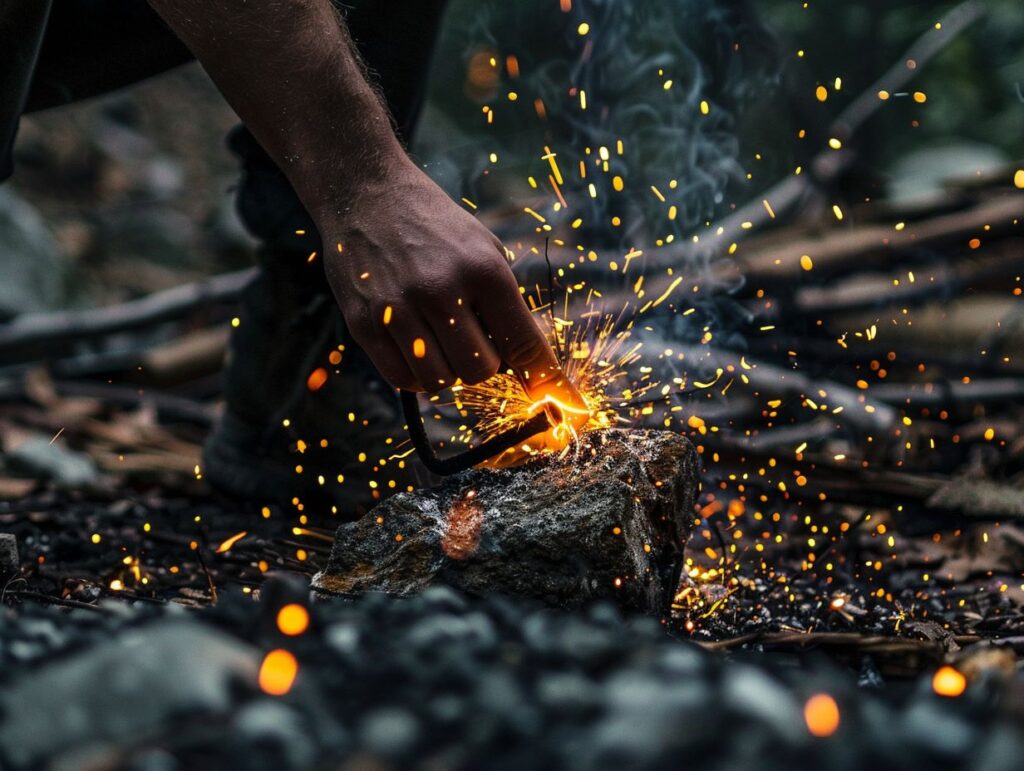Are you ready to take your campfire skills to the next level?
In this article, we will explore the best ways to start a campfire without matches. From the materials you need to the best types of tinder and fuel, we’ve got you covered.
We’ll also delve into various methods, including friction-based, chemical-based, solar-based, and electrical-based methods. Plus, we’ll share some handy tips and tricks to keep your fire going and extinguish it safely.
Let’s get started!
Key Takeaways:
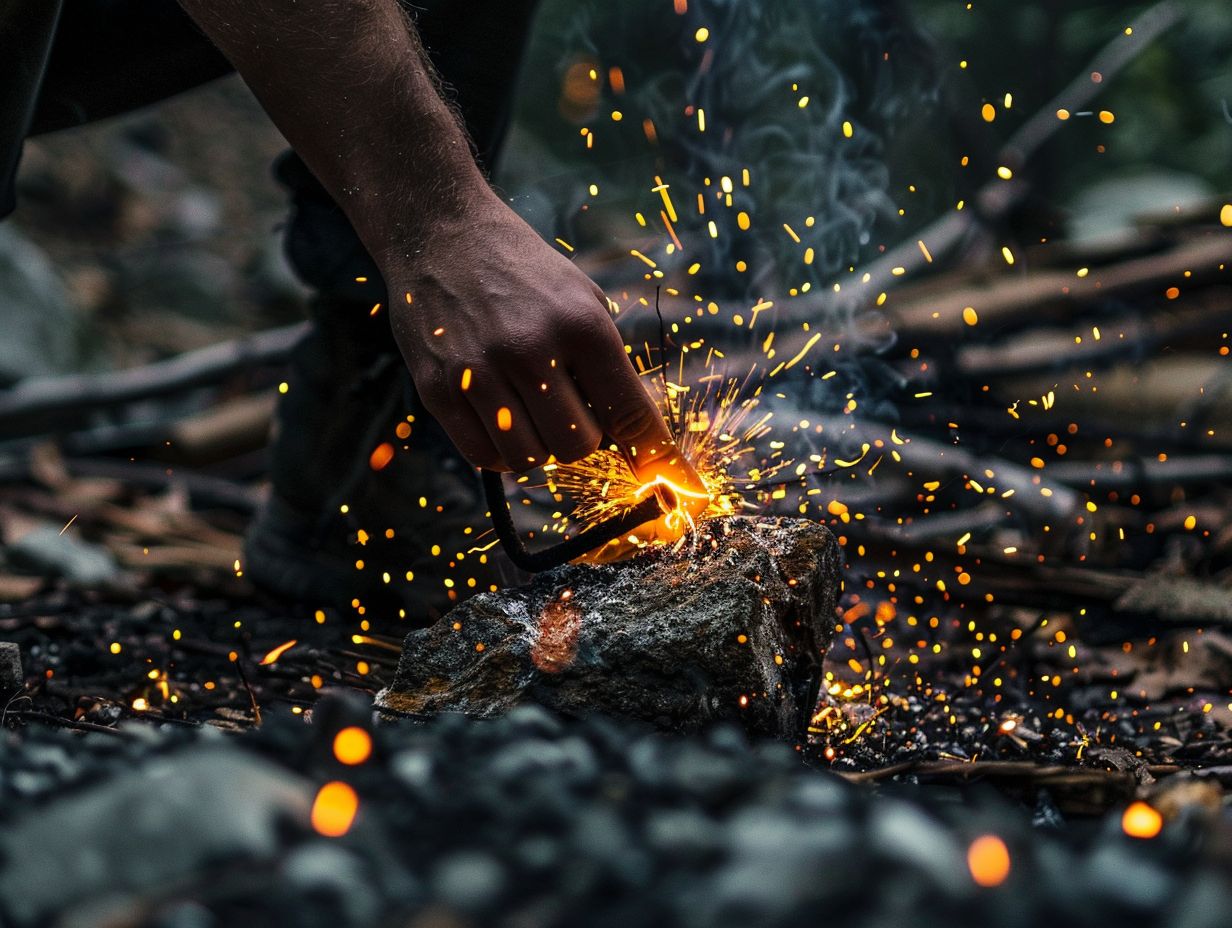
- Be sure to gather the necessary materials, such as tinder and kindling, before starting your campfire without matches.
- Utilise different methods, such as friction or chemicals, to start your campfire without matches.
- Remember important tips, like finding dry materials and safely extinguishing your fire, to ensure a successful and safe campfire experience.
Methods for Starting a Campfire Without Matches
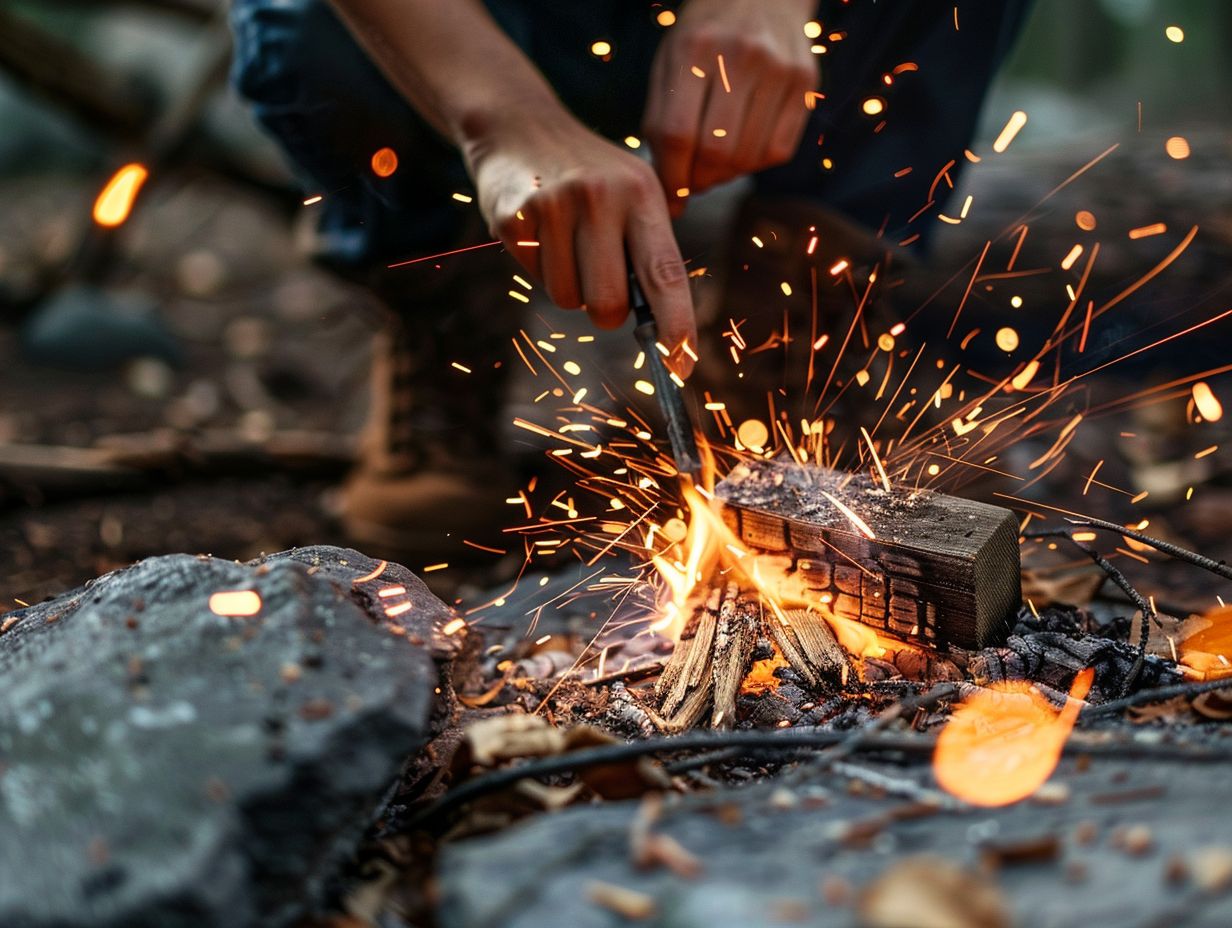
In a survival scenario, possessing proficiency in diverse methods for igniting a campfire is essential. These methods encompass friction-based, chemical-based, solar-based, and electrical-based techniques, each of which necessitates particular fire-starting skills to achieve efficacy.
1. Friction-Based Methods
Friction-based techniques, such as utilising a spindle and bow drill, rely on the generation of adequate heat through friction to produce an ember that can subsequently be transferred to a tinder nest.
The spindle and bow drill methodology entails the use of a pointed spindle and a curved bow to induce rapid rotational friction between the spindle and a fire board. It is imperative to maintain a consistent level of pressure and speed while rotating the bow to ensure the generation of sufficient friction required to ignite the dust or shavings present on the fire board.
Upon the formation of the ember, it is delicately transposed to a pre-prepared tinder nest composed of highly combustible materials such as dried grass, leaves, or bark. Subsequently, the tinder nest is gently blown upon to facilitate the ignition of the ember and surrounding materials, thereby initiating a fire.
2. Chemical-Based Methods
Chemical-based methods involve the combination of substances such as potassium permanganate and glycerine to initiate a chemical reaction that generates heat and ignites a fire.
For a successful chemical-based fire-starting procedure, it is crucial to carefully measure and mix the chemicals in correct proportions. Potassium permanganate, known as a powerful oxidising agent, reacts vigorously with glycerine, leading to a quick exothermic reaction.
When handling these chemicals, it is essential to wear appropriate protective clothing like gloves and safety glasses. It is recommended to work in a well-ventilated area to avoid inhaling any fumes. Proper storage of the chemicals in tightly sealed containers, kept away from heat sources, is necessary to prevent accidents or unintended reactions.
3. Solar-Based Methods
Solar-based methods utilise sunlight focused through a lens or magnifying glass to concentrate heat onto a small area of tinder, eventually igniting it.
When employing a lens or magnifying glass for fire starting purposes, the selection of appropriate materials is paramount. Dry and fluffy materials such as cotton balls, dry leaves, or fine strands of bark serve as excellent tinder due to their high flammability.
To effectively start a fire using a lens or magnifying glass, it is essential to position the lens or magnifying glass between the sun and the tinder, angling it to concentrate sunlight onto a specific spot. By adjusting the distance between the lens and the tinder, a focused beam of light can be created, thereby increasing the temperature of the tinder and expediting the ignition process.
It is imperative to maintain the stability of the lens and exhibit patience as the tinder begins smouldering. Subsequently, gentle blowing on the tinder can be employed to encourage the flames to grow and develop further.
4. Electrical-Based Methods
Electrical-based methods involve utilising a battery and steel wool to produce a spark capable of igniting tinder, capitalising on the conductivity of these materials to initiate a small flame.
This method of fire starting necessitates adherence to several crucial safety measures. When employing a battery and steel wool, it is imperative to verify that the battery is in good condition and possesses adequate power for generating a spark. Careful handling of the steel wool is essential, as it is prone to igniting easily.
Before commencing ignition, fluffing up the steel wool can improve its capacity to receive the spark and ignite promptly. It is advisable to select dry and highly combustible tinder, such as dry leaves or shredded paper, to effectively catch and sustain the spark.
Tips and Tricks for Starting a Campfire Without Matches
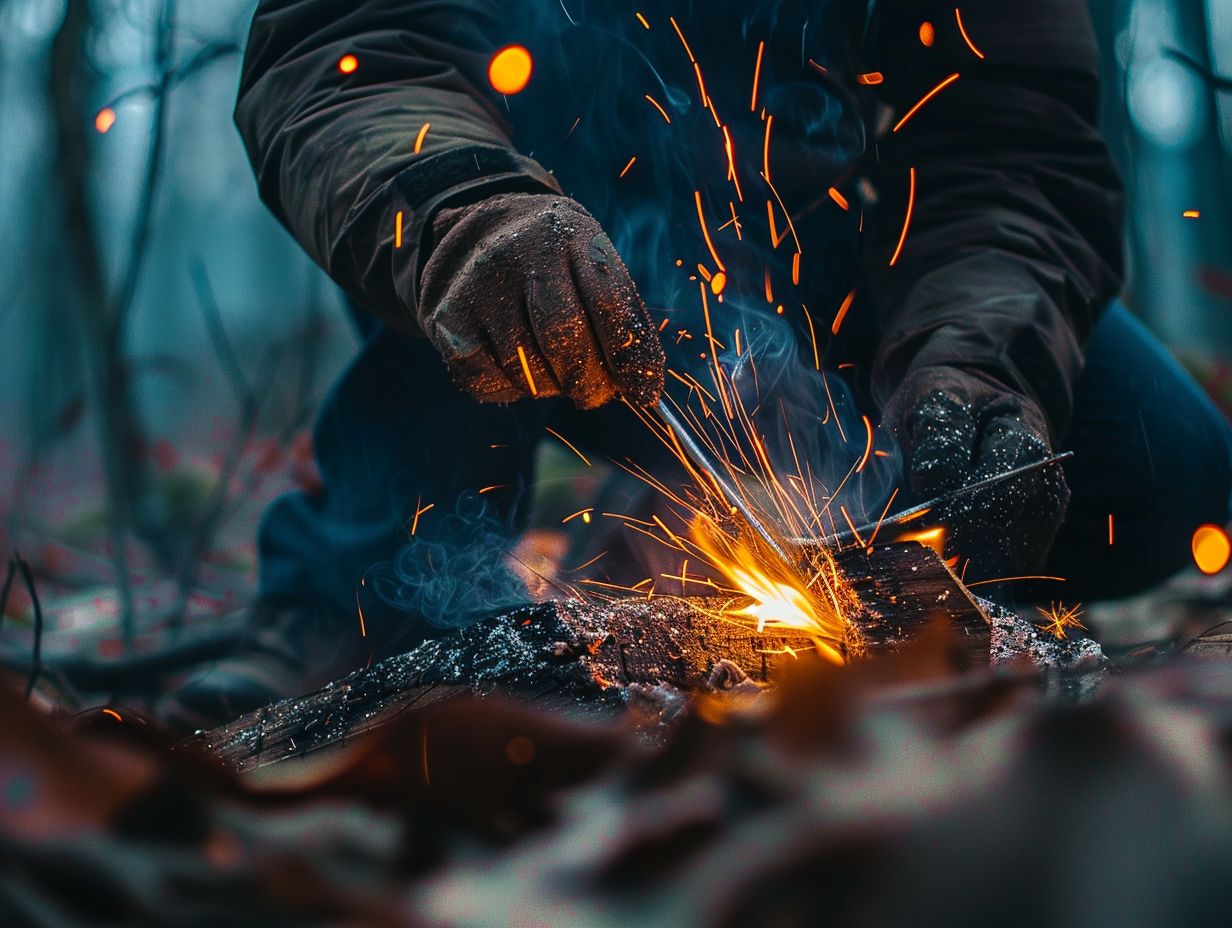
Acquiring proficiency in the methodology of initiating a campfire without matches encompasses a range of techniques and strategies. These methods may include using a scraper with magnesium or firesteel and adapting to diverse environmental circumstances to improve one’s competence in fire-starting.
What to Do if You Can’t Find Dry Materials?
When dry materials are unavailable, individuals should utilise a pocketknife to carefully shave off the wet outer layers of sticks and branches. This process allows access to the dry wood within, enabling the creation of a tinder bundle using the shavings and inner bark.
Individuals are advised to seek out standing dead trees or fallen branches containing dry heartwood that can be split to reveal the dry interior. These inner sections are often shielded from moisture, serving as a concealed source of dry kindling.
Ferns and conifers are identified as valuable resources, even in damp conditions, due to their fibrous composition that facilitates easy ignition. It is important to consider the moisture content of materials; typically, dead branches located further above the ground are drier.
It is recommended to gather a greater quantity of materials than initially estimated, as the presence of damp conditions can impede the process of starting a fire.
How to Keep Your Fire Going?
For maintain a consistent and steady burn in a campfire, it is important to periodically add small amounts of fuel to keep the fire going and ensure that there are always embers present to rekindle the fire if it begins to diminish.
Selecting the appropriate type of fuel is critical for sustaining a campfire. Dry kindling, such as small twigs or dry leaves, is optimal for quickly igniting the fire. Once the fire has been established, gradually introduce larger pieces of wood to sustain a steady burn. It is essential to arrange the fuel in a manner that allows for proper air circulation, facilitating efficient combustion.
Monitoring the embers is crucial; should they begin to diminish, gently blowing on them can help reignite the flames. Additionally, strategic addition of fuel can help maintain a consistent and safe fire.
How to Extinguish Your Fire Safely?
To safely extinguish a fire, it is imperative to spread out the remaining embers and ashes and then douse them with water. Afterwards, the mixture should be stirred until all embers are fully extinguished and cool to the touch. This process ensures that the environment is protected against any potential re-ignition.
Once all embers are confirmed to be cooled and extinguished, it is essential to scatter the wet ashes over a larger area to prevent the formation of concentrated heat pockets underground. Additionally, it is important to be mindful of the surrounding ecosystem by using water sparingly.
It is recommended to use only enough water to effectively extinguish the fire without causing unnecessary runoff. By following this approach, individuals can ensure that no trace of the campfire is left behind, minimising any adverse impact on the environment.
It is crucial to bear in mind that the complete elimination of heat sources is fundamental to a safe and responsible campfire extinguishing process.
Frequently Asked Questions
1. What are the best ways to start a campfire without matches?
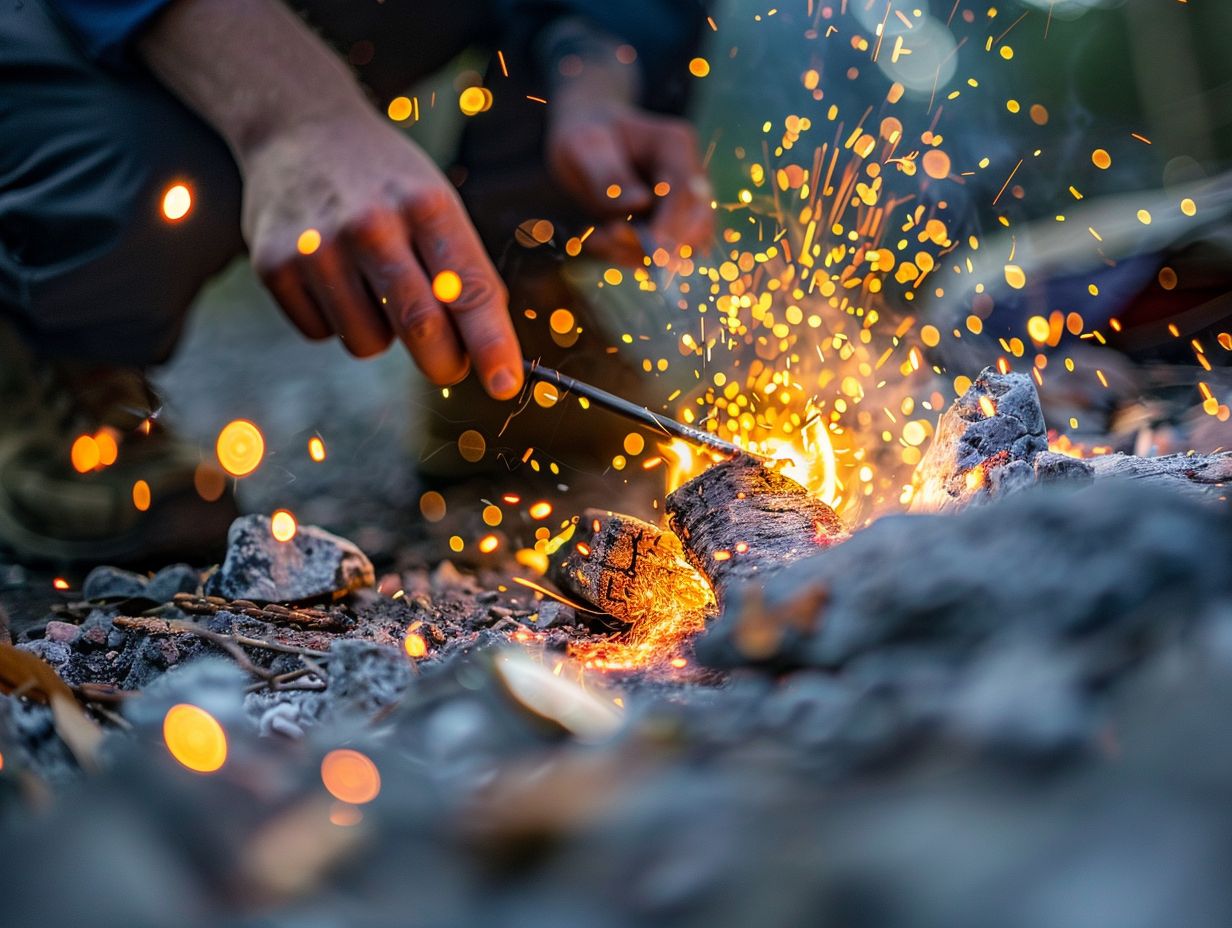
There are several methods you can use to start a campfire without matches, such as using a magnifying glass, a fire starter, a flint and steel, or natural materials like sticks and branches.
2. How do I start a campfire with a magnifying glass?
To start a campfire with a magnifying glass, you will need direct sunlight and a dry tinder bundle. Hold the magnifying glass between the sun and the tinder and focus the light onto the tinder until it starts smoking. Then blow gently to ignite the flame.
3. What is a fire starter and how do I use it to start a campfire?
A fire starter is a small device designed to create sparks that can ignite a fire. To use it, you can strike the fire starter against a rough surface, such as a rock or a metal surface, to create sparks. These sparks can then be directed onto your tinder to start a fire.
4. Can I start a campfire using a flint and steel?
Yes, a flint and steel is a popular method for starting a campfire without matches. Simply strike the flint against the steel at an angle to produce sparks. These sparks can then be directed onto the tinder to start a fire.
5. How can I start a campfire using only natural materials?
If you do not have any tools or fire starters available, you can still start a campfire using natural materials. Gather dry sticks, leaves, and small branches to create a tinder bundle. Use a fire piston or a bow drill to create friction and generate enough heat to ignite the tinder bundle.
6. Are there any safety precautions I should take when starting a campfire without matches?
Yes, it is important to always take safety precautions when starting a campfire, regardless of the method used. Make sure to clear the area of any flammable materials and have a bucket of water or a fire extinguisher nearby in case the fire gets out of control. Also, remember to properly extinguish the fire before leaving the campsite.

